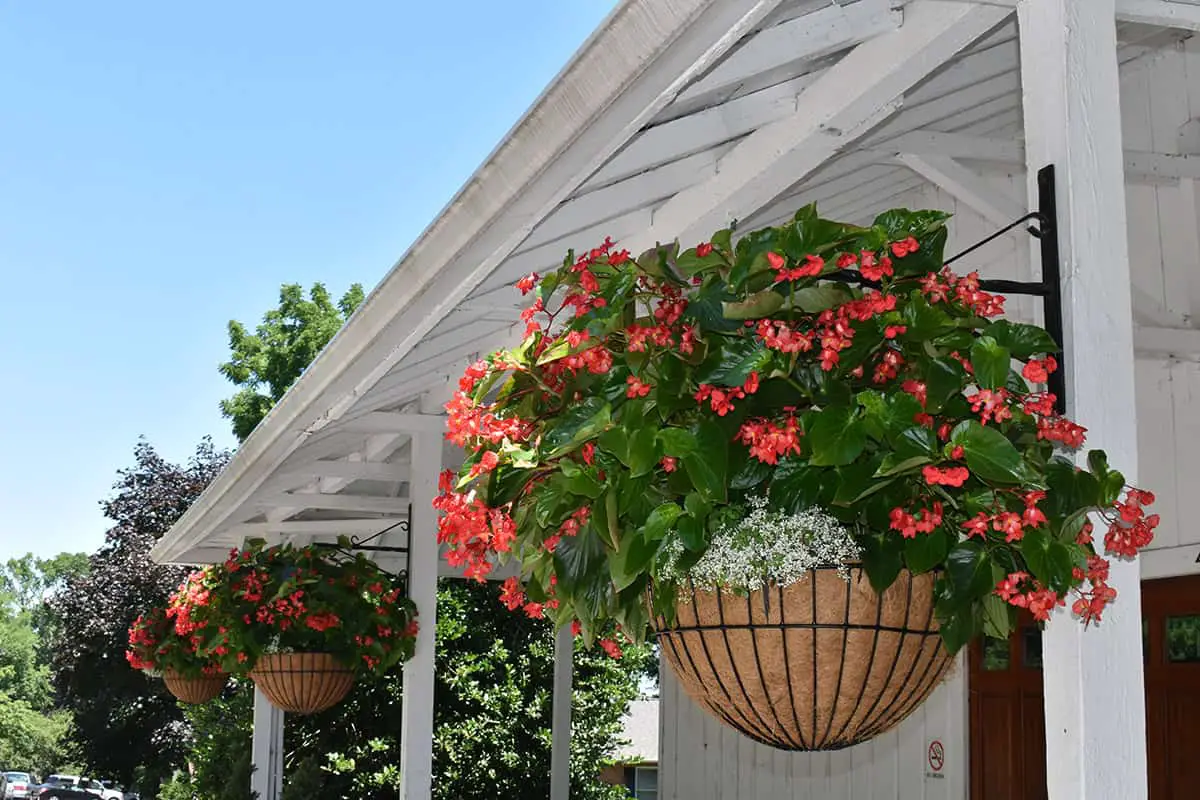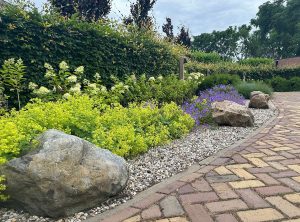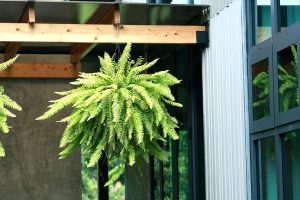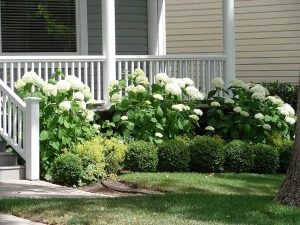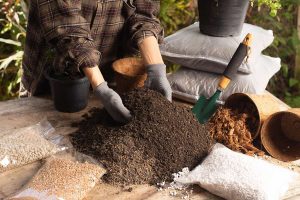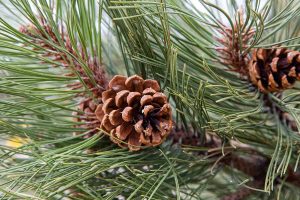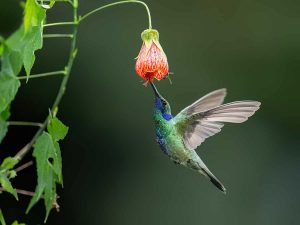You’ve just hung a beautiful basket of flowers on your porch, but after a few weeks, the plants start to look wilted and unhappy. It’s a common frustration many gardeners face with hanging baskets. Discover the most frequent errors and how to correct them so that your hanging baskets remain lush and vibrant.
Table of Contents
Choosing the Wrong Plants
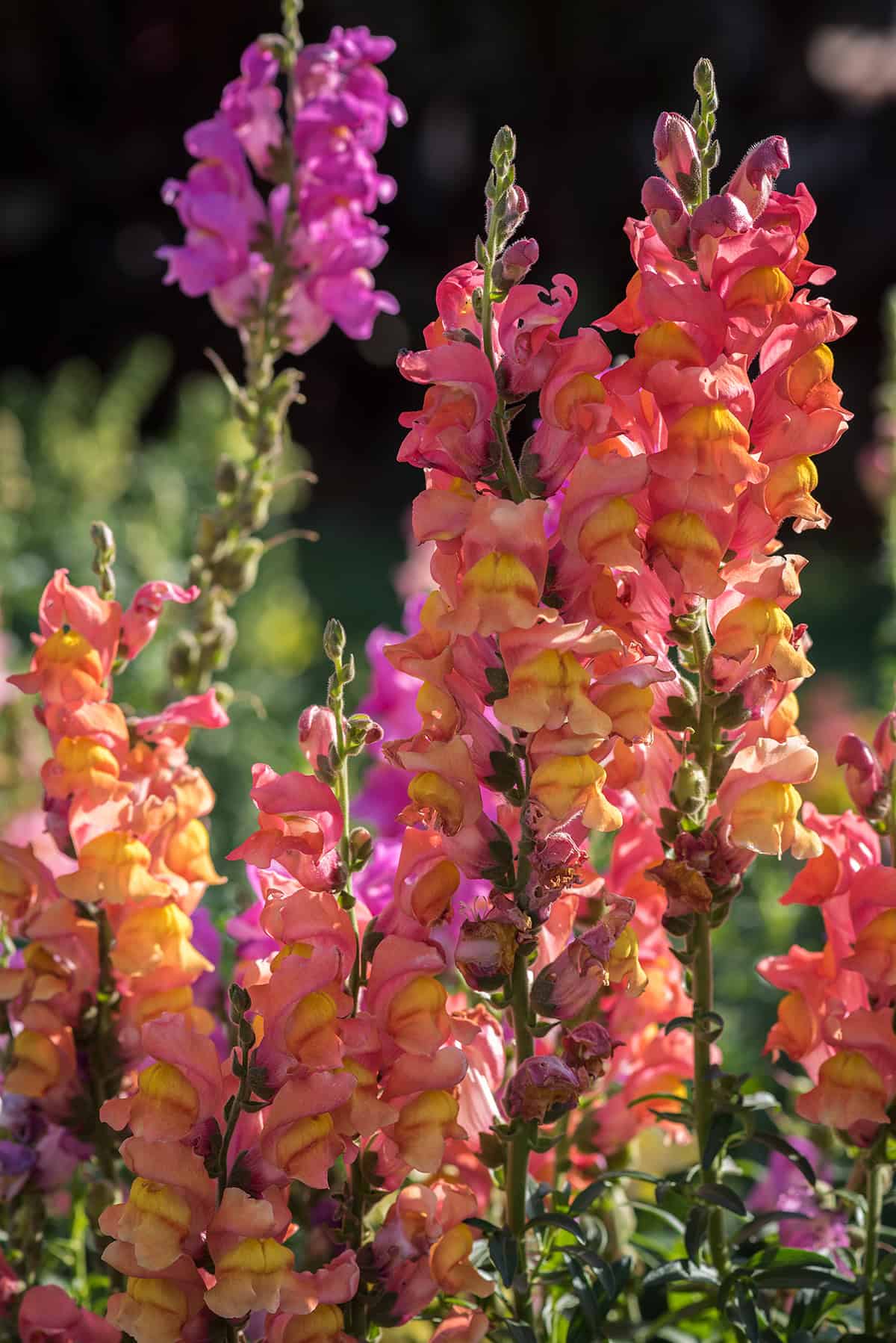
Choosing the wrong plants is a common mistake for hanging baskets. It’s important to select plants that suit the changing environment.
Avoid plants that grow tall, like snapdragons and zinnias. These plants don’t drape over the basket’s edge. Instead, they grow upright and struggle to thrive.
Choose plants that are suited to the light conditions of your space. Shade-loving plants will not do well in full sun, and sun-loving plants will not thrive in shade.
Select plants that have similar watering needs. Combining plants that need different amounts of water can lead to some plants drowning and others drying out.
Make sure the plants you choose can handle wind exposure if your hanging baskets are in a windy spot. Some plants are more delicate and can’t cope with constant wind.
Examples of Suitable Plants:
- Petunias: They drape over the edge and create a beautiful display.
- Lobelia: Ideal for adding a splash of blue.
- Geraniums: Hardy and can take full sun.
Avoid plants like snapdragons, zinnias, and dahlias. These tend to grow upwards and can crowd each other out.
Wrong Size of Basket
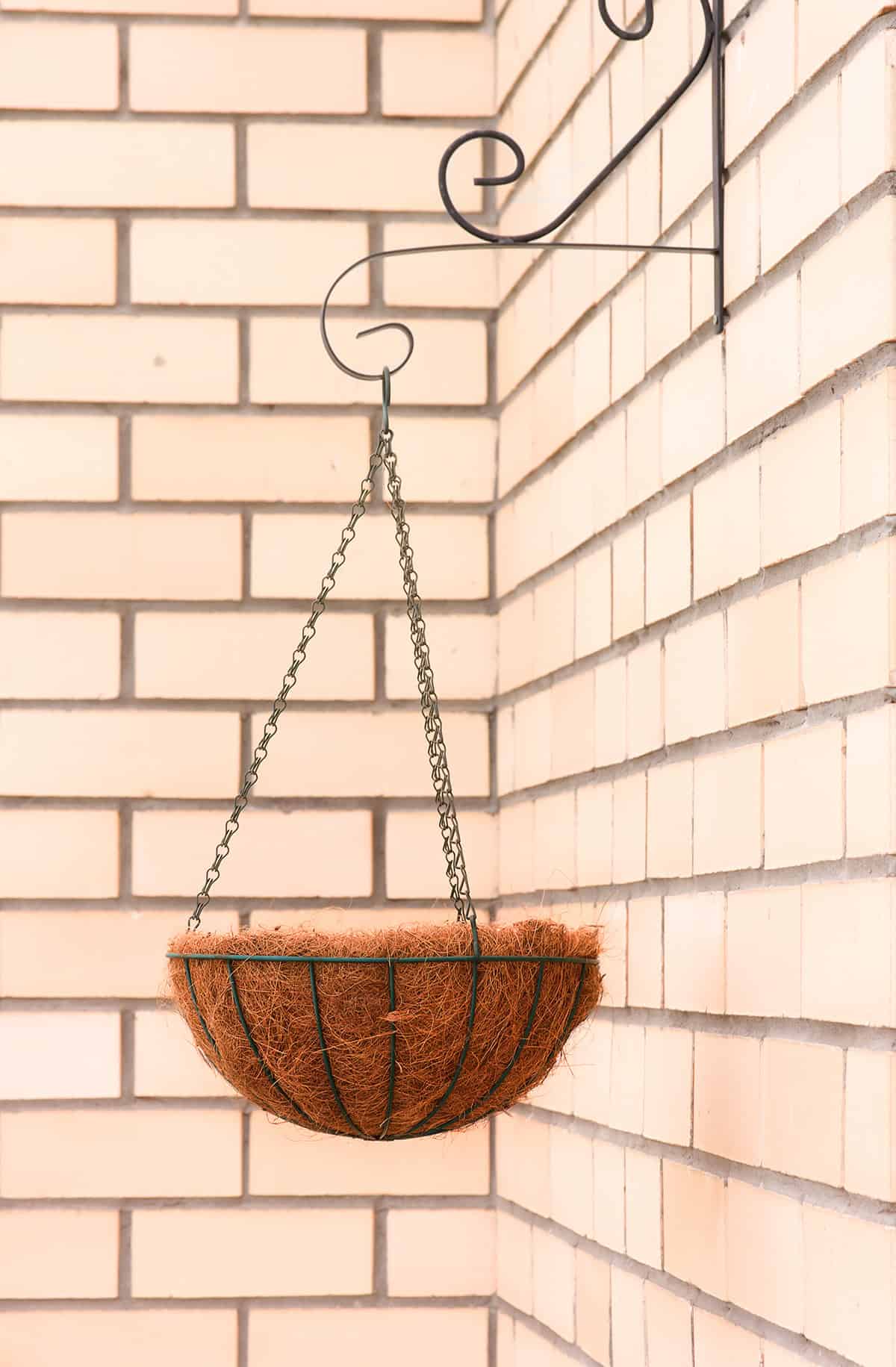
Choosing the wrong size of basket can hinder the growth of your hanging plants. Baskets that are too small may not provide enough space for roots to expand. This leads to overcrowding and poor nutrient absorption.
Smaller baskets also limit water retention. This can dry out plants quickly, especially in hot weather. You will need to water more frequently to keep plants healthy. On the other hand, baskets that are too large can make it hard for roots to reach water efficiently. This results in inconsistent growth and weak plants.
Nurseries often use smaller, 10 to 12-inch baskets. These baskets look appealing initially. However, they tend to run out of space by early summer, leading to struggling plants.
Selecting the right basket size is crucial. Larger baskets, around 14 to 16 inches, often work better. They provide ample room for roots to expand. This helps maintain healthy growth and reduces the frequency of watering needed.
When planting, consider where the basket will be placed. If it’s exposed to full sun, opt for a larger basket. This helps keep the soil moist and supports healthy plant growth. Avoid packing too many plants into one basket. Overcrowding restricts root development and impacts water uptake.
Weak Hanging Mechanisms
Weak hanging mechanisms can jeopardize the health and appearance of your hanging baskets. The first thing to consider is the material of the hook or bracket. Plastic hooks are prone to breaking, especially under the weight of a fully-grown plant. Choose metal hooks for better durability.
Inspect the chain or rope used for hanging. Thin, weak chains can snap. Opt for sturdy, rust-resistant metal chains. Nylon ropes are an alternative, but they should be thick and weather-resistant.
Pay attention to the attachment points. Ensure that the wall or ceiling bracket is securely installed. Loose brackets can lead to accidents. Use proper wall anchors if mounting on drywall.
Balance is crucial. Uneven distribution of weight puts stress on the hanging mechanism. Ensure the basket is centered and balanced. Adjust the plant placement if necessary.
Regular maintenance can prevent failures. Check for signs of wear and tear. Replace damaged parts promptly. Regularly inspect hooks, chains, and attachment points.
Overcrowding
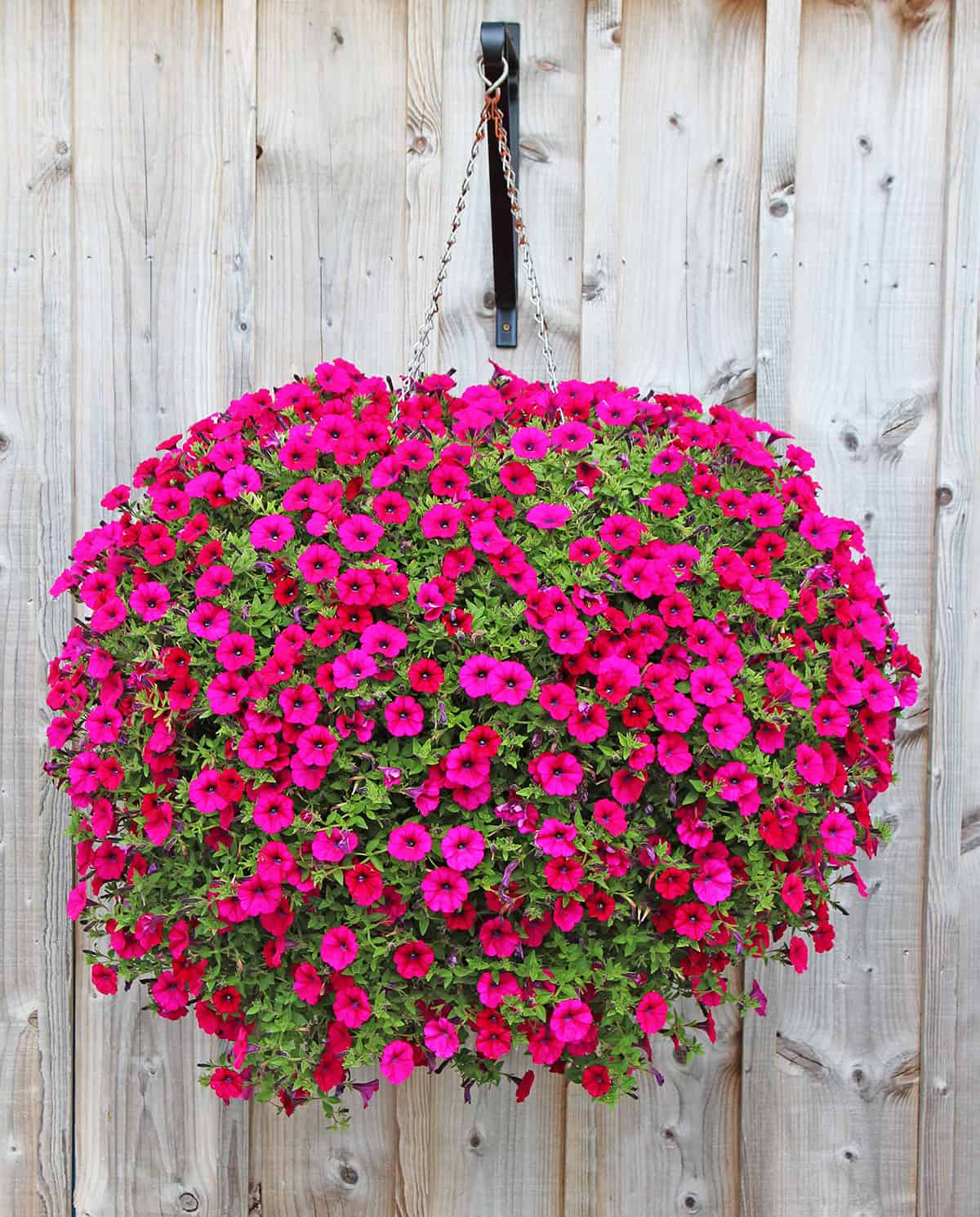
Overcrowding in hanging baskets can lead to poor plant health and diminished growth. When plants are too close together, they compete for nutrients, water, and sunlight.
Ensure each plant has enough space. Crowded roots can stunt growth. Use a larger basket if necessary to give roots room to expand.
If plants appear cramped, it’s a signal to re-evaluate spacing. Using a basket that is too small is a frequent issue. Smaller baskets may look appealing, but they can’t support multiple plants in the long run. Aim for a minimum of a 12-inch diameter basket for most plants.
Thin out weaker plants to improve growth conditions for remaining plants. This proactive approach prevents overcrowding and promotes healthy development.
Opt for larger baskets like 14 or 16 inches for mixed plantings. These sizes provide ample room, enhancing both aesthetics and plant health.
It’s critical to monitor sun exposure. Overcrowded baskets can block light from reaching lower leaves. This affects photosynthesis and can lead to yellowing or dropping leaves.
Air circulation is another concern with overcrowded baskets. Poor airflow can invite diseases and pests. Ensure good spacing to minimize these risks and maintain a healthy environment for your plants.
Poor Soil and Drainage
Using the wrong soil can damage your hanging baskets. A lightweight, well-draining potting mix is essential. Heavy clay soils can retain too much water, leading to root rot.
Garden soil might carry pests and diseases. It can also be too heavy. This weight can strain the basket and its supports. Instead, use a mix designed for containers.
A good potting mix should have nutrients. This supports your plants’ growth over the summer. Avoid compacted soil. This prevents proper water drainage and aeration.
Drainage holes are crucial. They help water escape, avoiding waterlogging. The right basket design can also aid this. Plastic and coir-lined baskets are better at retaining moisture.
Ensuring proper soil and drainage can keep your hanging baskets healthy. Neglecting these can lead to plant stress. Frequent checks and adjustments can make a significant difference.
Letting Baskets Get Too Dry
Letting your hanging baskets get too dry can harm your plants. Dry soil stresses plants and limits nutrient absorption. Ensure you water consistently.
Morning is the best time to water. Watering in the morning reduces evaporation. It also allows plants to absorb moisture before the day heats up.
Check moisture levels daily. Stick your finger into the soil up to the knuckle. If it’s dry, it’s time to water.
Choose a water-retentive soil mix. Using a well-draining yet moisture-retentive mix helps. Avoid heavy clay soils that can stay too wet or too dry.
Add materials like coconut coir or perlite. These materials help retain moisture. They also improve drainage, preventing waterlogging.
Regularly inspect drainage. Ensure drainage holes are not blocked. Proper drainage prevents root rot.
Consider using a self-watering system. These systems maintain consistent moisture levels. They are especially helpful during hot, dry periods.
Monitor the weight of your basket. A lightweight basket often indicates dry soil. Heavier baskets usually mean moister soil.
Grouping plants with similar water needs is smart. This ensures all plants get adequate moisture without overwatering some.
Use mulch to retain moisture. Mulch helps keep the soil cool and reduces evaporation. Organic options like straw or wood chips work well.
Placing Baskets in the Wrong Spot
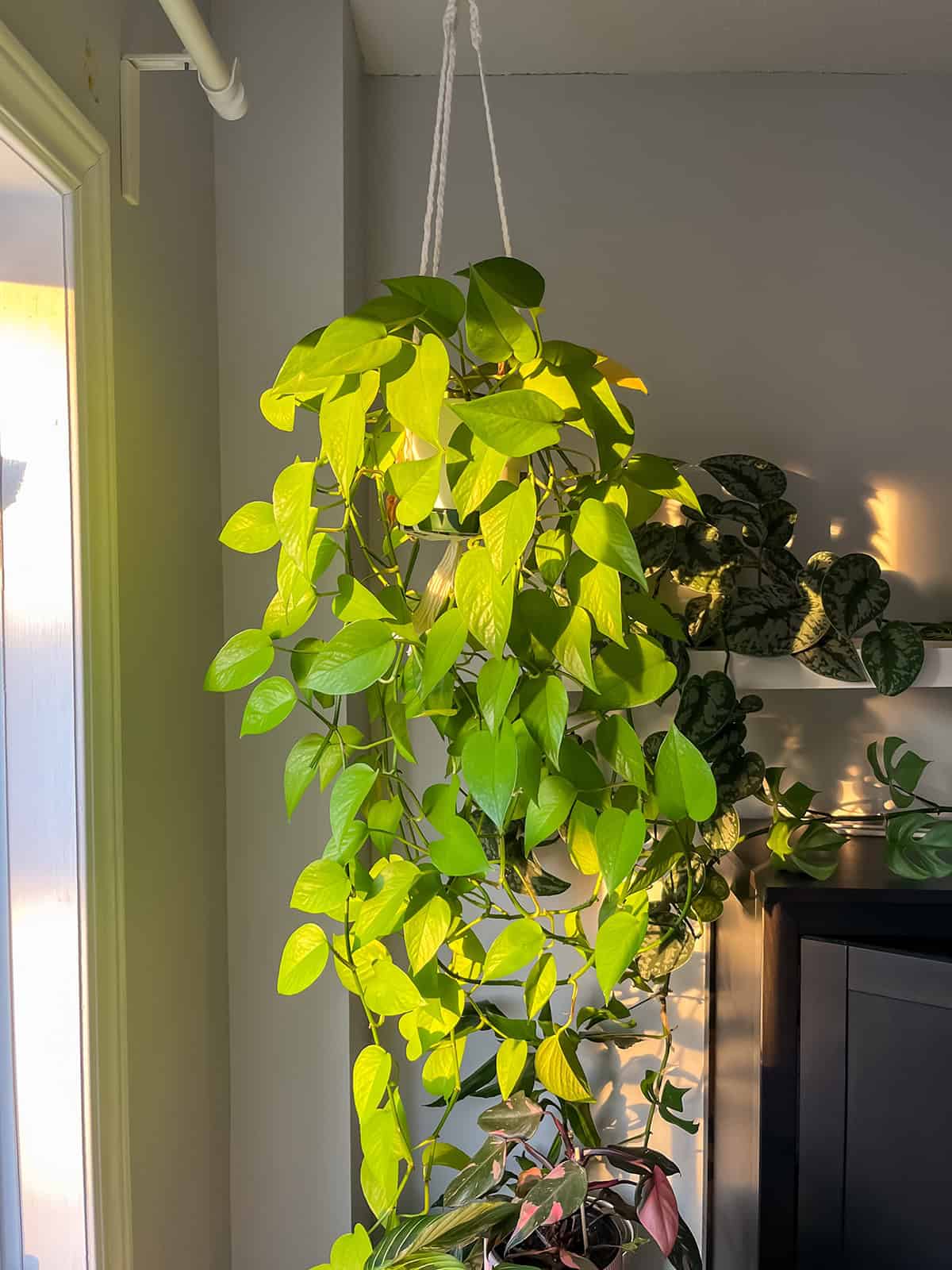
Placing hanging baskets in the wrong spot can severely affect plant health. Sunlight is crucial. If your basket is in full shade but the plants need full sun, they won’t thrive.
Consider the wind. Hanging baskets in windy areas dry out quickly. This can lead to wilted plants. Protect your baskets with a windscreen.
Humidity and temperature are important. Placing baskets near air conditioning units can create a dry, harsh environment. This causes plants to struggle.
Proximity to walls matters. Placing baskets too close to walls can limit air circulation. This leads to mildew and mold. Ensure there’s ample space around the baskets.
Watering becomes easier with proper placement. Hang baskets within reach. This prevents neglecting watering due to inconvenience.
Optimal placements include:
- Under eaves for shade-loving plants
- Sunny spots for sun-loving varieties
- Sheltered areas for wind protection
Not Rotating Baskets
Not rotating your hanging baskets can lead to uneven growth. Plants will grow more on one side if they always face the same direction. This uneven exposure to light can affect their overall health.
When you rotate your hanging baskets, every part of the plant gets equal sunlight. This helps maintain a balanced growth and promotes healthier plants.
You can use a simple schedule to remember when to rotate your baskets. For example, rotate them 90 degrees once a week. This ensures all sides receive adequate sunlight.
Ignoring this practice can result in one-sided growth. Lopsided baskets are less attractive and might become unbalanced. This can be avoided by rotating regularly.
In addition, rotating helps improve air circulation around the plants. This reduces the risk of fungal infections. Consistent rotation can also help in monitoring any pest issues more easily.
Keep in mind the weight distribution when rotating. Ensure the basket is securely fastened. A balanced basket is easier to rotate and maintain.
Avoid placing baskets where rotation is difficult. Accessible locations make rotation simpler and more practical.
Ignoring Fertilization
Ignoring fertilization can severely impact the health and appearance of your hanging baskets. Fertilizing is crucial for maintaining vibrant, healthy plants throughout the growing season.
Plants in hanging baskets deplete nutrients in the soil quickly. Frequent watering can wash these nutrients away. Without replenishment, plants won’t receive the essential nutrients they need for growth.
Using both dry and liquid fertilizers can be beneficial. Dry fertilizers, such as worm castings, provide a steady nutrient supply. Liquid fertilizers offer immediate nourishment by allowing plants to absorb nutrients quickly through roots and foliage.
Consistent fertilization is key. Fertilizing every ten to fourteen days ensures that your plants stay strong and vibrant. Avoiding fertilization can result in weak plants with poor blooming.
In the summer, it’s even more important to fertilize. Increased sunlight and heat cause plants to consume nutrients faster. Regular feeding supports healthy growth and colorful blooms.
Choosing the right fertilizer also matters. A balanced formulation with essential nutrients like nitrogen, phosphorus, and potassium works best. This supports various plant functions from root development to flowering.
Skipping fertilization means missing out on vibrant, healthy baskets. Keeping up with a regular fertilization schedule helps ensure your hanging baskets thrive all season long. Make fertilization a priority for the best results.
Ignoring Temperatures and Winds
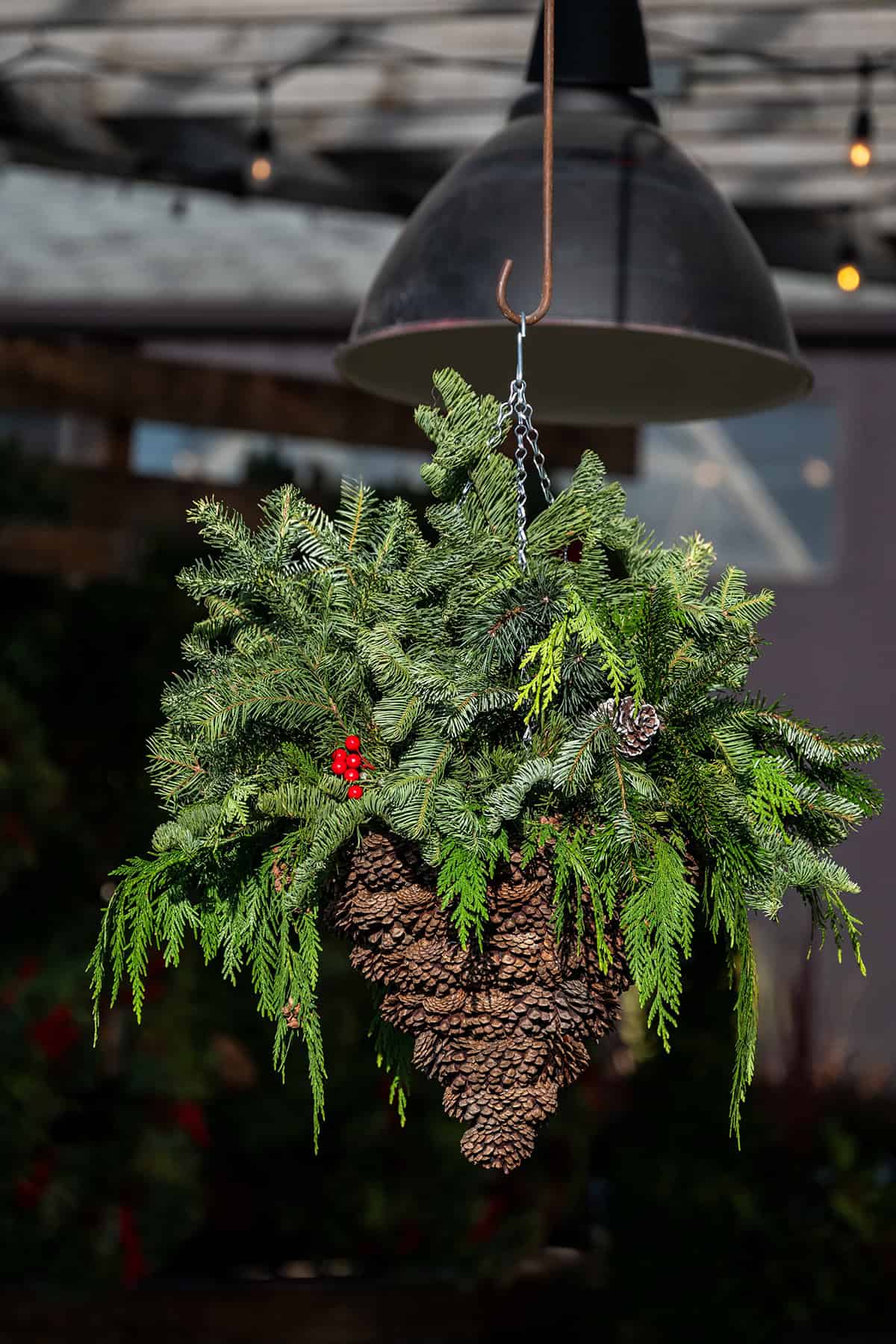
When dealing with hanging baskets, ignoring temperatures and winds can lead to significant issues.
High temperatures can dry out the soil quickly. This leaves plants thirsty and stressed. Check the moisture levels frequently during hot days. You may need to water more often to keep plants healthy.
Cold winds can damage your plants. Ensure your hanging baskets are protected from harsh winds. Position them near walls or in sheltered areas.
Strong winds can also cause physical damage. They can break stems or dislodge plants from the soil. Use a secure mounting method for your basket to prevent accidents.
Some plants are sensitive to temperature changes. Know the needs of your plants. Choose plants that can tolerate the temperature and wind conditions of your area.
Proper placement is critical. Locate hanging baskets where temperature and wind impact are minimized. For instance, an east-facing wall offers morning sun and protection from afternoon heat.
Mulching can help. Use mulch to retain moisture and protect roots from temperature fluctuations.
Be vigilant about weather changes. Shifting conditions can quickly affect the health of your hanging baskets.
Not Trimming or Deadheading Plants Regularly
Trimming and deadheading hanging basket plants is essential. When you skip this step, plants can become overgrown, leading to fewer blooms.
Deadheading involves removing spent flowers. This simple act encourages new growth. By doing so, plants focus their energy on producing more flowers instead of seeds.
Make it a habit to check your hanging baskets weekly. Snip off any dead or faded blooms. Use clean, sharp scissors for precise cuts. This prevents potential plant diseases.
Benefits of Regular Deadheading:
- Promotes more blooms: Consistent deadheading directs the plant’s energy into creating new flowers.
- Prevents disease: Removing dead parts reduces the risk of fungal infections.
- Enhances appearance: Keeps your hanging baskets looking neat and attractive.
Most hanging basket plants benefit from regular trimming. This practice not only keeps them tidy but also stimulates growth. For example, many flowering plants will bloom more profusely with regular deadheading.
Avoid the common mistake of neglecting this important task. Your plants will thank you with a continuous show of vibrant blooms. Follow these simple steps, and your hanging baskets will thrive.
